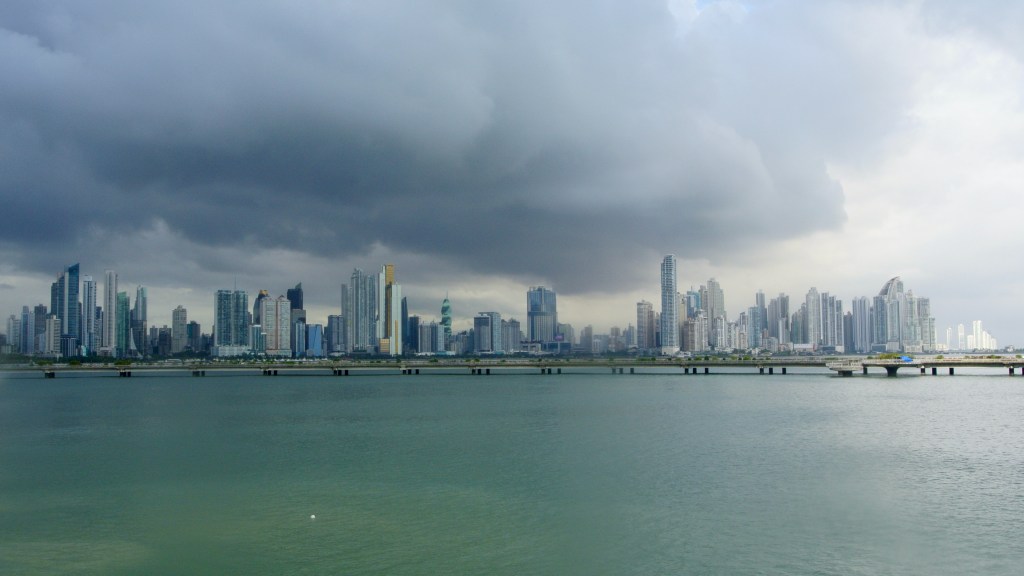
Panama City, the capital of the Republic of Panama, is not a tourist city. Its been (not without controversy) a major financial center and strategic link in North/South trade since its founding in 1519. That said, Panama City boasts not only the Canal, one of the great engineering feats of all time, but the outstanding Biomuseo designed by international celebrity architect Frank Gehry, his first in Latin America.
Panama City a week before Christmas 2021 was my first international destination since Covid’s new normal began in early 2020. Despite the fact that Panama has been effective with health controls and has a high vaccination rate I did not want to explore outside of the city. I did not want to drive and, understandably, many excursions to surrounding regions had been curtailed or canceled due to Covid.
The choice of Panama City itself was Covid related. In 2020 I had round trip tickets to Peru on Copa Airlines, Panama’s flag carrier – one of four trips cancelled that year. The airline’s voucher had to be used before the end of 2021.
December has always been a favored time for me to take a short trip, and Panama City seemed to contain enough to keep a traveler engaged for a week – the unexpected was oppressive tropical heat and humidity at that time of year in this southern most Central American country. Yet my reality was that seven days could have been reduced to four even without the restrictions of Covid.
Panama City is not a tourist city; it’s a business city
Panamá Viejo (the old city) was founded by Spanish Conquistadors in 1519 on the Pacific Ocean side of the isthmus. Although sparsely populated, the Isthmus of Panama was within Spain’s strategic plans for the conquest of the Inca Empire in the Andes Mountains to the south. That resulted in the city’s businesses being targets for the Spanish Empire’s enemies. The famed Welsh pirate Henry Morgan effectively destroyed Panama Viejo in 1671.
The ruins are a UNESCO World Heritage Site only five miles/eight km southwest of current Panama City. But keep in mind what’s left of Panama Viejo is just ruins. If you enjoy archaeological sites then the trip from downtown is only 30 minutes.


Within two years (1673) settlement began in Panamá Nuevo, aka Casco Viejo (Old Fortification) constructed a bit inland with more effective defenses yet still providing access to the sea. The city flourished for the next century with its commercial location between Spain’s North American and South American colonies, but the ultimate collapse of Spain’s American empire in the early 19th century doomed the economy. Added to Columbia after Spanish independence, Panama was ruled by a distant and indifferent government in Bogotá. The Isthmus remained sparsely settled and Casco Viejo’s importance steadily faded until the current day.
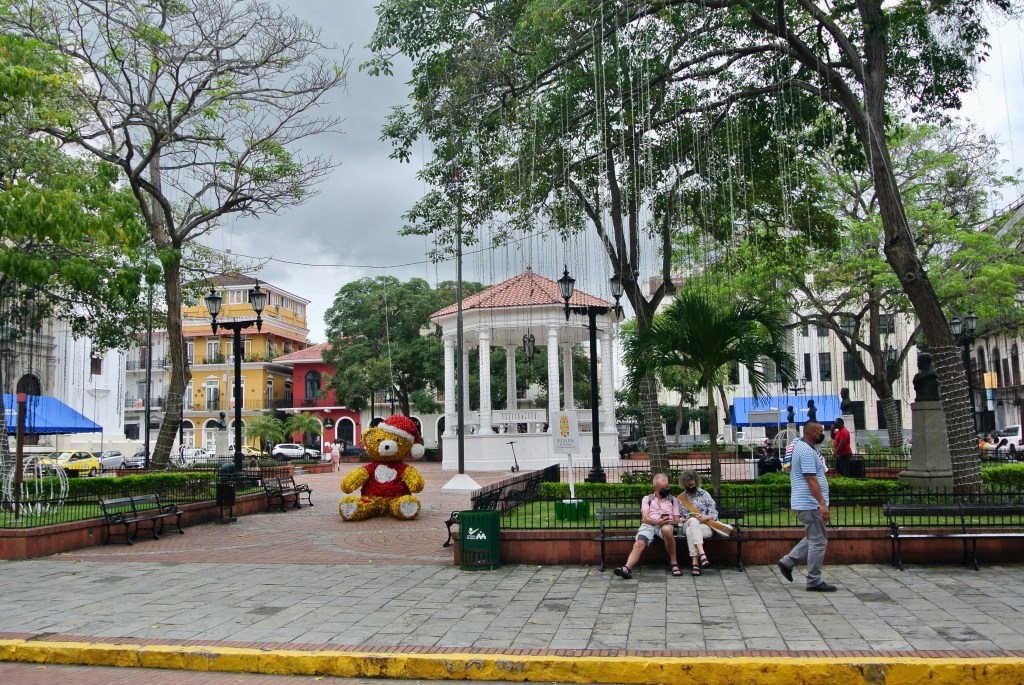
Casco Viejo is another UNESCO World Heritage Site. That designation and Panama’s unexpected prosperity over the past 30 years has led to massive restoration. Several essential government departments and cultural institutions such as the National Theatre of Panama, the Presidential Palace and the Panama Canal Museum are located there. Yet gentrification has not gone without controversy concerning the displacement of long-time low-income residents.

Casco Viejo today is a warren of very narrow streets and impressive 19th century architecture. It is a fashionable place to live, the center for nightlife, has many boutique shops and accommodations, high end dining and is well guarded. Fortified walls in the old days were security and today a considerable number of heavily armed police are rarely out of sight.


The sidewalks are also narrow and traffic crawls slower than you can walk in Casco Viejo. I had the Uber drop me off at Independence Plaza in front of La Catedral Metropolitana and wandered for several hours on foot. Near the National Theater is a section of the fortified wall where you’ll find arts and crafts vendors and the Balboa Artisan Market. The Market has a wide selection of indigenous and modern Panamanian arts, crafts and souvenirs. The return trip started with a 45 min wait for the Uber to crawl back – not the driver’s fault.
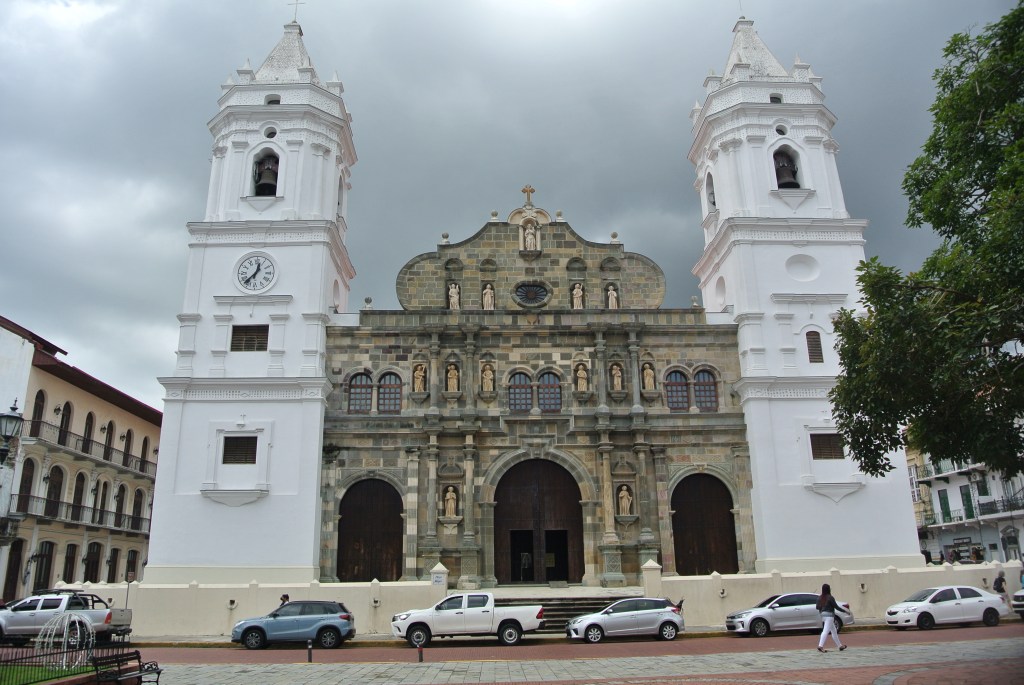
The Panama Canal – Miraflores Locks

Life changed at the dawn of the 20th century for both the city and Panama when the legendary dream of an easy water passage between the Atlantic and Pacific Oceans threw light on the Isthmus of Panama. In just a few years (1903) Panama was an independent country, and the United States with a plethora of international investors and engineers arrived along with the first of many waves of immigrants from the Caribbean islands and Central America recruited to build (1904-1914) the Panama Canal.
There are a number of tours advertised on the internet that will take you through the canal. Almost none updated the constantly evolving changes in Covid-19 regulations, which results in abrupt cancellations or unexpected closures without prior notice. Barring an actual transit of the canal by ship there is the Panama Canal Railroad paralleling the route, which is now a tourist train (formally used for work) but that was not operating as well.
The only opportunity close to Panama City to view any of the operation of the canal is at the Miraflores Locks at the canal’s Pacific entrance. Miraflores is one of the three locks and the name of the small lake that separates these locks from the Pedro Miguel Locks upstream. In the Miraflores locks vessels are lifted 54 feet in two stages allowing them to transit between the oceans.
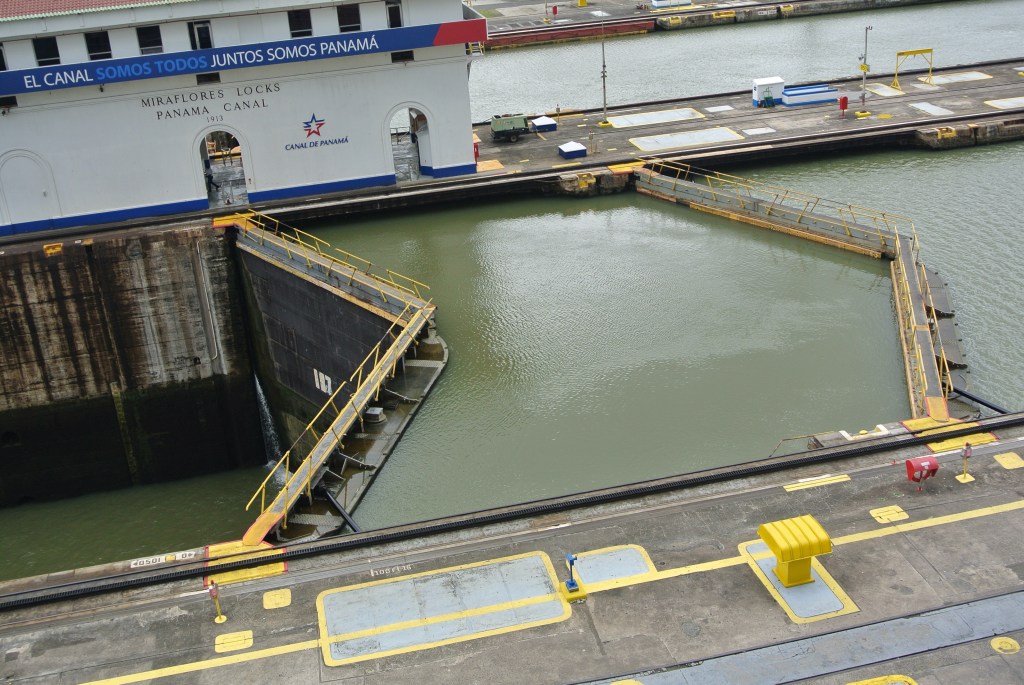
A visitors center allows tourists to have a full view of the operation if lucky enough to time everything correctly. Once more Covid restrictions were not updated on their website, which greatly minimized the experience. The much-touted Miraflores IMAX 3D theater on the Canal story was closed as was the museum within the Visitors Center itself.
The only things open in the Visitors Center were a small insignificant gift shop, expensive coffee shop and the observation deck with panoramic views of the locks. Unfortunately trying to time the arrival of ships that will enter the lock along with Covid-19 related controls on the number of visitors at any one time made the experience less than stellar.
One complication is that the published transit schedules of ships is, in reality, a rough estimate. Covid-19 has created a monumental traffic jam of waiting ships docked outside the canal’s entrance. Their “schedule” is when they’re told by the Canal authorities.
Arriving at the Miraflores Visitors Center in the morning an hour before a scheduled transit (according to the web) we were told that we could buy a ticket to the observation room, but the next ship had been delayed two hours. Covid restrictions on number of people and time on the observation deck would negate the opportunity to witness the ship’s transit if we entered at that time. We were advised to wait two hours before entering, so we sat on a staircase and waited because there is no other place you’re allowed to go within the Miraflores complex.
One hour later (remember we were told two hours) we could see the ship arriving, but it then took nearly one hour to get in and reach the observation deck. We missed the dramatic 54-foot rise of the massive cargo ship but were able to witness the ship exiting into Miraflores Lake. At this point many writers would chastise the traveler for “poor planning,” but Covid-19 has made the unexpected and disappointment the “new normal” for travel.
Biomuseo – truly the only must see
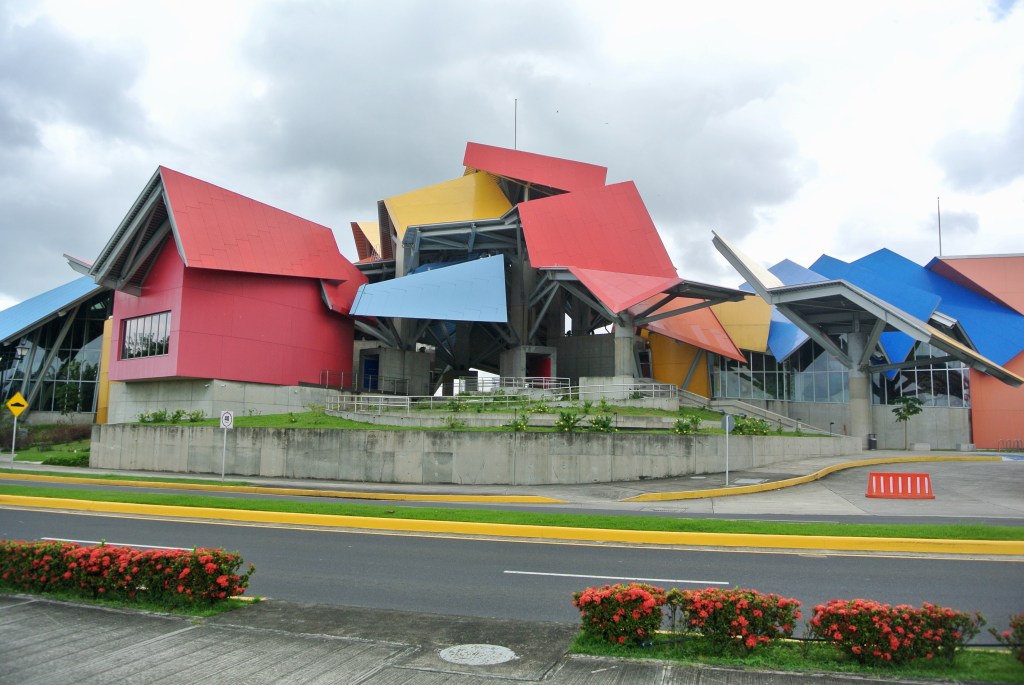
The Biomuseo is focused on the natural history of Panama, which had a major impact on the ecology of the Western Hemisphere. Located on the Amador Causeway it was designed by renowned architect Frank Gehry. This was Gehry’s first design for Latin America and opened in 2014. Its open airy interior augmented by the colorful overlapping roof panels makes the museum the most comfortable non-air conditioned attraction in hot, muggy Panama.
The Biomuseo highlights Panama’s natural history. Its galleries tell the story of how the rise of the Isthmus of Panama was a seminal geologic formation resulting in a land link between the continents of North and South America. It resulted in one of the Earth’s last great exchanges of species, (Panama is home to more species of birds, animals and insects than the United States and Canada combined) and aided in the migration of humans throughout the Western Hemisphere.

The Biomuseo is on the Amador Causeway, which is a top attraction in its own right. It connects with the Cinta Costera, a pedestrian bridge and roadway bordering Casco Viejo and the Mercado de Mariscos. Built partially on reclaimed land, both provide parks, public art, wide bike and walking paths and stunning views of 21st century Panama City. (PS: I did not wander around the new downtown – bank buildings and shopping are not my reason for travel).

Metropolitan Natural Park
Metropolitan Natural Park is the world’s only city park that’s a certified tropical rain forest. It’s peaceful, lush, full of life and reminds you that Panama City is hot and humid most of the year. Paths take you up the 500-acre park’s large hill on an eco tour to the mirador with a panoramic view of 21st century Panama City.

Accommodations
Given its status as a national capital Panama City has a plethora of fine hotels with many moderately priced. TRYP by Wyndham Panama Centro in the upscale residential neighborhood of El Cangrejo was convenient and comfortable. It has a nice rooftop pool with views of the modern downtown, but Covid had closed its bar. Its restaurant, The Gastro Bar at 5-0-7, served breakfast (included) and was open for lunch and dinner with an eclectic selection of mostly well prepared American influenced dishes.
Panamanian national cuisine?
The Gastro Bar at Tryp served one of the few dishes I ate whose roots are in Panamanian indigenous tradition, Panamanian Sancocho. It’s a simple, light yet flavorful chicken broth-based soup with a few vegetables. Otherwise, the sparsely populated indigenous pre-Spanish culinary legacy, whatever it was, has been lost.
Panama City’s cuisine is a polyglot fusion (Spanish, the Caribbean islands, Central and North America) the consequence of massive immigration to build the canal and nearly a century of United States colonization. Overall, many restaurants were little different than “Americanized ethnic” menus found in the USA with prices higher than anywhere else I’ve dined in Mexico and Central America.
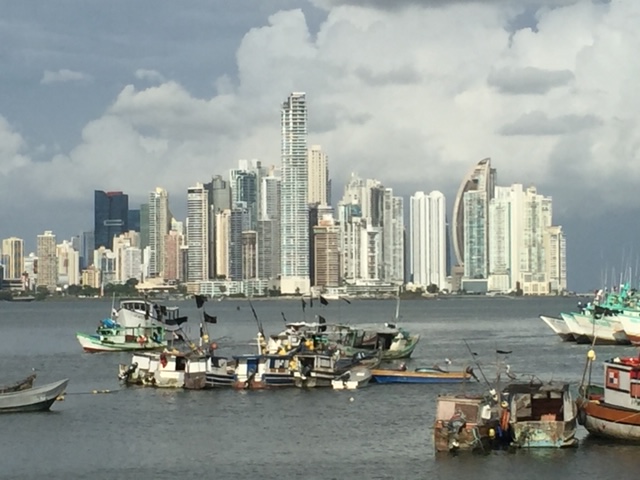
Perhaps the most common Panamanian cuisine would be fish and seafood whose abundance in the surrounding waters is undeniable. The Mercado De Marisco on the Cinta Costera at the base of Casco Viejo is the City’s wholesale fish market from early morning hours until mid-afternoon with dozens of semi open-air fish and seafood restaurants open until the evening. In this Covid world it’s as local as you can get.
Yet some words of caution. I’ve traveled and lived in a number of tropical countries and eaten much street food. I was on the prowl for anything I could identify as part of an elusive Panama cuisine, but many restaurants that looked promising were simply closed due to Covid, which you may not know until you arrive or no one answers the phone.

We carefully chose one of the partially open air restaurants in the Mercado De Marisco, and the dishes were tasty. But three hours later – right on schedule for food poisoning – one of the several dishes I tasted made me sick.

That said I had very good shushi and sashimi at a modern, popular Japanese chain restaurant in El Congrejo, Nation Sushi. They have air-conditioning so powerful that maybe that’s why the fish and seafood were as fresh as if just out of the refrigerator. Sushi is very popular throughout Central America and Mexico, although it’s not going to be exactly the same as in Tokyo.
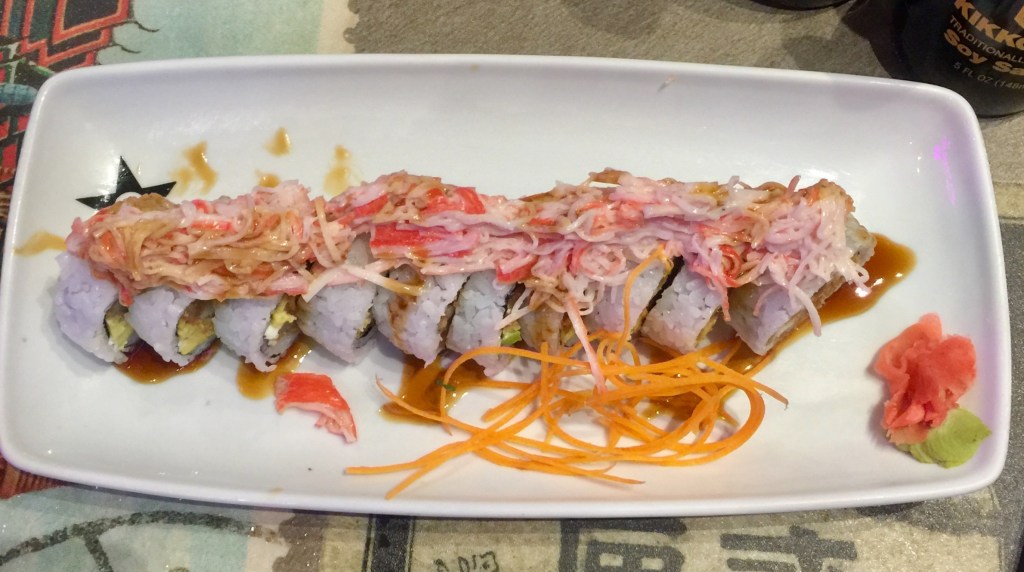

The influence of fellow Central American nations with national cuisines is pervasive due to immigration. At El Cipote Restaurante & Pupuseria, pupusas, a national dish of El Salvador, is pretty much all that’s on the menu. Pupusas are a cheese stuffed corn flour pancake that can be eaten as a compliment to soups and stews or by itself with pickled vegetables or salsas.
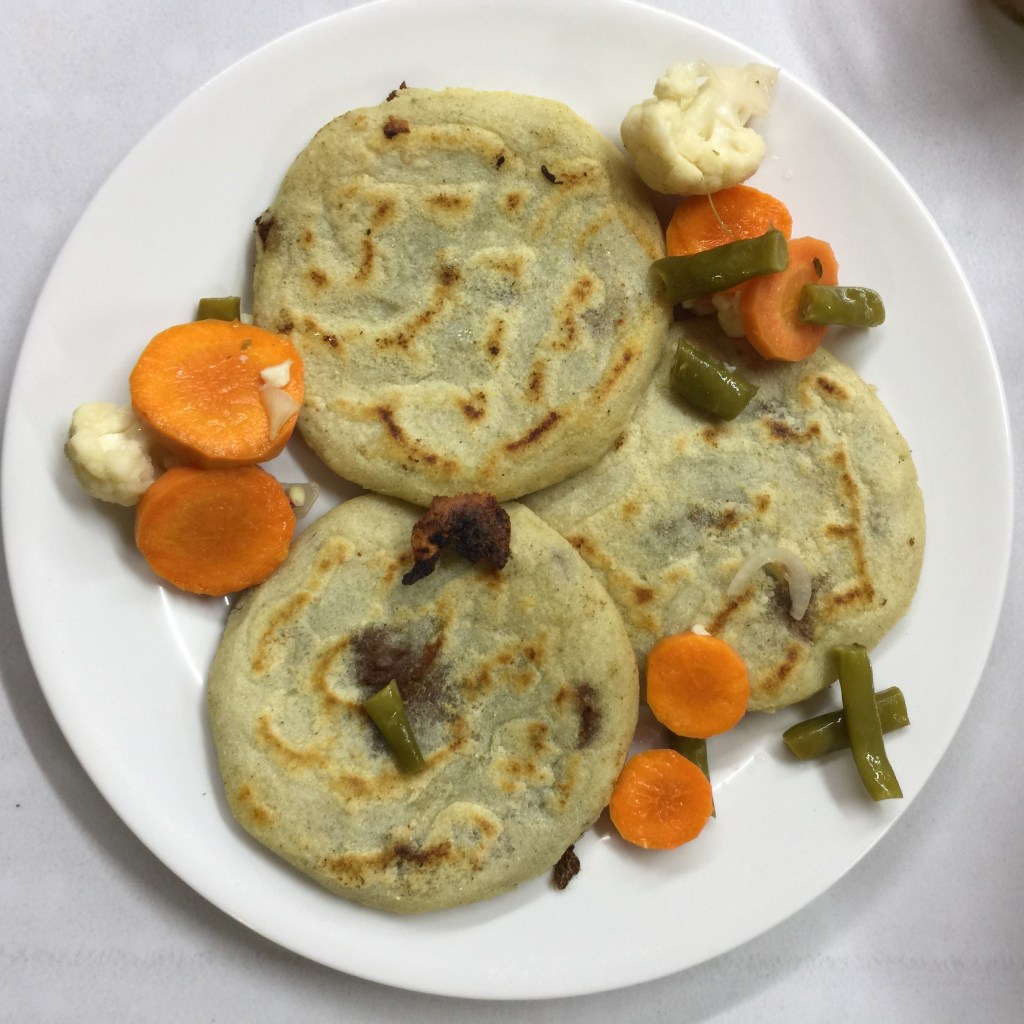
Should you go?
I’ve been traveling professionally for many years. I am used to unexpected complications and cancellations, but not the lack of updates. Panama’s tourism related websites do a disservice in not constantly updating their information especially during this time of Covid restrictions.
In the best of times what we were able to experience in Panama City that were cultural highlights would have taken no more than three or four very leisurely days. But because of lack of information it actually took seven too often frustrating days to experience what the city had to offer to tourists.
If you happen to be flying anywhere on Copa Airlines they do offer passengers the opportunity to have a day or two stopover in Panama City (where just about all Copa flights pass through) then continue to the final destination. That’s a good alternative.
I rarely recommend films to watch before traveling to a new destination. But with Panama two excellent films provide thought provoking insights. Panama Canal Stories spans the over 75 years of American domination and its social impact. The Laundromat explores the underbelly of “legal” international corporate finance.
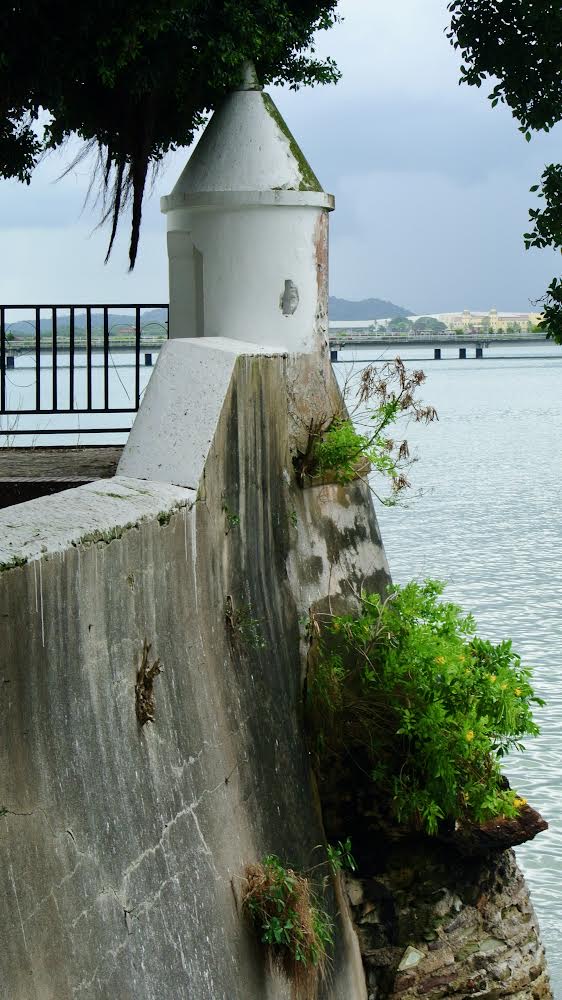
you can read more by Travel with Pen and Palate at…

You must be logged in to post a comment.